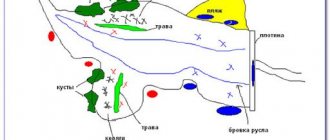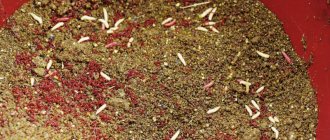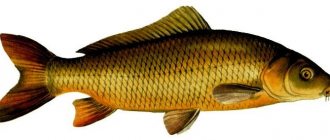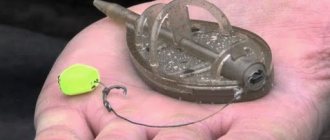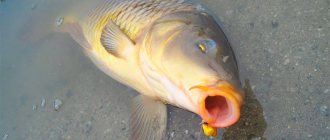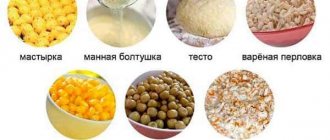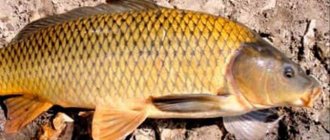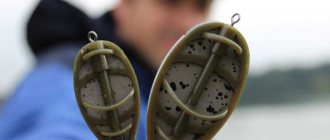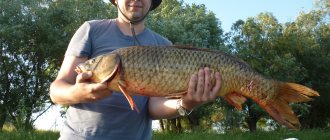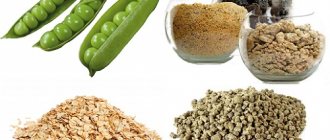Carp are often caught in ponds. On the paysite everyone has opportunity to compete with good fish. Many also find their carp in wild ponds and lakes. But fishing on the river is in many ways more interesting, and besides, it can bring very good results. Flowing water bodies are inhabited mainly by carp, the wild cousin of carp. Catching it is especially interesting. The fish in the river are active, they bite resolutely, but when fishing they desperately resist.
How to catch carp on the river: features
The peculiarity of river fishing is that fish that live in running water are much stronger than pond water. Wild river carp is twice as strong as carp grown in pond farms. This happens both because the fish have to constantly fight the current and because it is much more difficult to find food in the river .
When fishing in flowing waters, you need to be prepared for powerful resistance. You will need strong tackle and careful fishing to cope with the fish. Reference! Another characteristic feature is that the bait is carried away by the current. When fishing on the river, it is important to choose the correct mixture composition and appropriate feeding tactics. There are also some nuances in choosing fishing spots on the river.
Fishing secrets
It should be said that the behavior of this fish can differ significantly depending on the specific reservoir, river or lake, depth and speed of the current. It is necessary to look for carp in large and small deep valley reservoirs, in old channels, flooded quarries, in small ponds and deep holes. In summer, large specimens prefer to stay at a depth of up to 5 meters. But in spring or autumn, when it gets colder, carp, including large and small ones, go deeper into the fairway.
Carp is a strong, cunning and cautious fish. When fishing, the prey resists especially actively, which is so appreciated by many fishermen. catch truly large specimens of carp and carp. It will take some effort to pull such a handsome guy out of the water. It will be necessary to choose the right gear and bait used, and remain careful and quiet at the fishing site.
Only experienced, seasoned carp anglers will conquer the largest specimens. You should rely on your extensive experience in catching this fish and use exclusively the best and correct carp fishing gear for a particular body of water. This is the only way to guarantee an excellent catch , regardless of whether you are fishing on a lake, in a river or in a small pond.
Choosing a fishing spot
To look for carp and carp on the river you need to:
- under cliffs, under high washed-out banks;
- on bends;
- in bays and creeks.
These are typical catching places for fishing on rivers . Carp can also be found at typical points that attract it in any body of water:
- on edges and pits;
- on shell rocks - areas where the bottom is strewn with dracena;
- at the confluence of tributaries - streams and small rivers;
- at the boundaries of vegetation thickets;
- near fallen trees and snags.
Snags are the most promising fishing spots. You can always find fish here. But, since fishing in strong cramps is impossible due to frequent snags, gear is thrown to the boundaries of such areas.
Carp avoids areas with fast currents. Of course, this strong fish can easily overcome the resistance of any water flow. But in areas with fast currents, it does not feed, since food does not linger here. Therefore, you need to catch carp where the water flow slows down.
Features of spring fishing for carp and carp
Catching carp and carp in the spring is quite unpredictable fishing. The behavior of fish during this period is changeable, so it is often impossible to predict in advance what the bite will be like.
In addition, in the spring, in most regions, water bodies become free of ice. Such large changes in the state of the water area greatly affect the behavior of fish.
For example, when the water becomes cloudy after the ice melts, carp and carp reduce activity to a minimum.
But such changes in the condition of lakes and rivers are at least easy to notice and take into account when choosing a time and place for fishing. Important. The less familiar you are with a body of water, the more difficult it will be to succeed.
When an experienced fisherman who has managed to thoroughly study the specific water area where fishing will take place goes fishing, the chances of good results are much higher. With experienced comrades, such a difficult event as fishing for carp and carp in the spring will be much easier, so if possible, it is worth going to the reservoir with them or at least talking with such fishermen to take advantage of their advice. In summer, fishing for carp or carp is much more predictable . Therefore, it may make sense to wait until this time when fishing is much easier. But many still don’t want to waste time and go fishing for carp in the spring in order to quickly open the season and indulge their soul in their favorite hobby.
How to catch carp on the river: gear
Bottom fishing rods
The advantage of donks is that it is more convenient to fish with them in the current.
After casting, the equipment falls to the bottom and, if the sinker or feeder is selected correctly, remains at one point. After this, you can calmly wait for a bite, making recasts every 15-20 minutes or less. To catch carp on the river, all types of donks are used, but some of them are better suited for such fishing, while others are worse.
- Zakidushka is the simplest version of a donkey, consisting of a reel on which a fishing line with a sinker and one or more leashes with hooks are wound . To fight such strong fish as carp, it is better to use a rod with guides and a reel instead of a reel. It will be very useful when fishing for trophies.
- An elastic band - the advantage of this type of donkey is that when fishing with it, you can put the equipment on the bottom at the same point over and over again , without the need to make casts , the sound of which often scares away the fish. The equipment consists of: a load weighing 1-3 kg, a piece of braid tied to it, to which an elastic band up to 15 m long is tied, a working section of fishing line with leads and the main fishing line.
- Makushatnik is one of the best folk (not sports) gear for catching carp on the river. To assemble the equipment of this donkey, at the end of the main fishing line you need to attach a sinker of a special design and 2-3 leashes with hooks. You can buy a special weight for fishing with a fly rod at a fishing store. Before casting, you need to attach a piece of flour (cake) to it and stick hooks into it. The carp, which has approached the smell of the treat, will begin to feast on it and pull the hook into its mouth.
- The feeder is a donk, the equipment of which necessarily includes a feeder. When fishing with it, you can always be sure that the bait is located directly next to the nozzle , which means that the probability of a bite is maximum. In the classic version, there is only one leash with a hook at the end.
- Carp tackle is a bottom fishing rod that is designed only for catching carp and carp and is best suited for hunting large fish. Very similar to a feeder, but differs from it in greater power. Unlike feeder gear, the equipment of a carp fishing rod often does not include a feeder; instead, a sinker is mounted on the fishing line.
Float rods
The advantage of a float rod is that carp usually bite on it more readily. He is very well attracted by bait that is carried downstream by the water flow.
But it is much worse suited for catching trophy fish than donka , since it lacks power.
Even the strongest float rods can hardly withstand the fight with 10-12 kg fish , which use the current to get away from the angler. If a more respectable specimen is hooked or the fishing takes place next to a snag where the carp can put the equipment and entangle it there, the chances of pulling it out with a float rod are very low.
For carp fishing you can use:
- fly rod - for catching small fish in the coastal zone ;
- Bolognese tackle - this is a float fishing rod for fishing with a wire , with which you can also make long casts;
- a match fishing rod is a tackle for long-distance ; it is also suitable for wire fishing, but not as good as a lapdog.
The best choice for catching carp and carp in the river would be powerful float rods with large casts, equipped with spinning reels. With them you can either make long casts, at a distance of up to several tens of meters, or simply release the equipment downstream near the shore.
Preference should be given to short, up to 4 m, fishing rods. Such a compact tackle weighs little, so it is comfortable to fish throughout the day. It is better to use small reels for float fishing, up to 3000 in size. Larger models, again, make the tackle heavier.
How to choose gear for carp
Lures
The best time to catch carp is the season when the water temperature fluctuates between 18-260C. When choosing bait, they proceed from traditional principles - wild carp are caught using familiar food items: cephalopod meat, worms, fish or crayfish meat. But in many regions, fishermen fish with porridge and other mixtures that are hardly available to “savages” in everyday life. Fishing stores have various baits in stock in the form of ready-made canned baits, but it is always worth checking the taste preferences of the fish with experts or owners of the reservoir. The following rule is most often applied to baits and flavors: for cold water - animal baits and weak odors; The warmer the water, the more often the use of plant baits and sweet aromas. For all equipment it is possible to use a large number of different granules or “pellets”. Boilies can be divided into groundbait and bait boilies. Their cost and packaging size depend on this. The size is selected based on the intended trophy and its dietary preferences. As a rule, a large boilie size “cuts off” bites from small fish. In general, it is almost impossible to describe the number of products used for catching carp. It is better to take the opinion of local fishermen and fishing guides.
Feeding
When fishing in the current, you can use bait in a stationary feeder , which lies on the bottom and remains in one place. In particular, such a feeder is a component of a rubber donkey.
You can lower it into the water separately when fishing both with a float rod and with a casting donk.
Another option is to feed with the bait that is used as bait . You can throw corn, peas, pearl barley or boilies into the water in bulk.
The advantage of this method is that such bait does not produce turbidity, which often scares away the carp, while attracting small things . This feeding method is well suited for fishing near the shore at shallow depths. The current will carry away the grains, so you need to regularly add new portions of food into the water.
The next method of feeding is to use multi-component mixtures , which must be filled with water. After this, they can either be thrown into the water with balls, or hammered into a feeder feeder. This feeding method is well suited for any conditions, including fishing at great depths.
Important! The main thing in this case is to choose the optimal consistency of the bait, that is, to understand how much water to pour into it. The mixture for fishing in currents should be more viscous and sticky than for fishing in still water.
The correct concentration for fishing in a particular place determined experimentally. If, when fishing with a bottom with a feeder, the food is washed out of it too quickly after casting, then you need to add more water. When its quantity is optimal, the food will be gradually washed out of it after the equipment falls to the bottom, attracting the carp to the hook with the nozzle.
During the current you need to use a lot of bait , much more than when fishing in still water, since the mixture is quickly carried away by the flow of water. Experienced carp fishermen often throw several tens of kilograms of feed mixture into the water during a couple of days of fishing. And this allows them to achieve excellent results, catching a lot of trophy fish.
Bait for carp and carpHow to prepare bait for carp with your own hands
What to use to catch carp and carp
Both carp and carp are omnivorous fish. Therefore, they are caught using a variety of baits. In spring and autumn, they prefer animal food rich in protein, so fishermen mainly hook worms, bloodworms, maggots, burdock moth larvae, grasshoppers, crayfish meat, various insects, boilies of appropriate flavors, etc. On summer days, when the water is well warmed up, carp or carp prefer vegetable baits, including:
- bread;
- dough;
- pearl barley;
- peas;
- corn;
Carp and carp bite well on chickpeas
- pellets;
- boiled potatoes;
- cake balls;
- chickpeas and more etc.
Of course, fishing for carp and carp should be accompanied by feeding. To do this, you can use ready-made dry mixtures, which are mixed in a pond by adding local water, or bait prepared independently. It can contain various ingredients, but, as a rule, the base is all kinds of cereals and cereals, potatoes, cake, flour products and many others. etc.
Attractants and flavorings play a significant role when fishing for any carp.
For a better bite, you should feed the fish
It can be:
- Dyes or visual attractants. Sold in both liquid and powder form. They serve to make the bait brighter and more noticeable. Or, on the contrary, they help darken the bait, giving it the color of the bottom. After all, carp or carp may be frightened by an incomprehensible colored spot and not approach the baits.
- Chemical carriers of odors. They are glycerin or alcohol based. Most often they are sold in liquid form in small containers. Sometimes they are also used as sprays for treating baits before casting. The flavor palette is almost unlimited: from the usual and familiar smells of garlic, mint and honey to “exclusive” and unusual aromas - mulberry, red krill, sweet spices, etc.
- Deeps. These are special flavors designed to impregnate bait and groundbait. They come in liquid, powder and even gel form. Dips can enhance the flavor of the bait or change it completely. Some are also able to give them a different color.
To make the bait more attractive, dips are used
- Essential oils. Also quite productive attractants when fishing for carp. They dissolve well in water and are able to lure fish from both short and long distances. Most often, carp anglers use eucalyptus, geranium, juniper, clove and garlic oils.
Selection of nozzles
For catching carp on the river, the following are best suited:
- corn;
- steamed peas;
- pearl barley.
It is these affordable attachments, which are very easy to get , that you should definitely add to your arsenal. In general, river carp, unlike its pond brother carp, is not very picky. In summer, he usually willingly takes any bait offered to him. The main thing is to find a suitable place , and what nozzle to use is not so important.
Reference! In spring and autumn, when the water is colder and the carp is passive, it is more difficult to force it to bite. At this time, it is worth trying animal baits such as bunch of worms or shell meat. Boilies are a good choice for catching trophy fish in the river at any time of the year.
Groundbaits and baits
Every fisherman knows the rule “what you feed is how you catch it”; it also works when catching carp using float tackle. After spawning, the carp begins to actively feed and is able to eat more than its own weight in food per day. It is difficult to overfeed this fish in the summer, although there should still be reasonable limits.
The area chosen for fishing is fed with balls of pre-prepared bait mixture. When fishing in the current, soil from the reservoir is added to the bait, which weighs down the balls. Adding a dusty small fraction to the bait should seem to attract fish more actively, but small fish, the ubiquitous roach, bream or crucian carp will also come to it.
It turns out that the fisherman, having fed the place, does not even realize that all the “goodies” offered to the carp have already been stolen by small fish and there is no point in waiting for a bite. Therefore, a large fraction is added to the bait, which remains at the bottom even in the current. The role of the major faction is performed by:
- pellets 14–22 mm;
- sinking boilies 16–24 mm;
- undercooked peas;
- fermented corn.
The use of dusty boilies is ineffective; they work to quickly attract fish and will become prey for small fish. Store-bought bait, boilies and pellets will be required in large quantities, so for those who are counting money and saving, peas and corn are an excellent alternative.
Peas, in general, are carp’s favorite delicacy, and large fish are drawn to their aroma. Cooking peas is a simple process; the main thing is to ensure that you don’t end up with a soft mass that will be carried around by small fish. The dusting effect of soft peas is undesirable, so they should remain firm. Fermented corn also successfully attracts carp to the fishing point and is used not only as bait, but also as bait.
Features of fishing techniques
When fishing with a wire, the float must be set so that the bait floats directly above the bottom if there is a high probability of snags, or drags along the ground when fishing in clear areas.
If you fish with a donk, it is important to select the optimal weight of the load or feeder for each of the points . After falling to the bottom, the equipment should not be dragged by the current. In some cases, 30-40 gram weights or feeders are enough, in others you need to use 100-120 gram weights.
Carp bite in the river more decisively than in standing reservoirs . Therefore, its bite is not difficult to notice. The lips of river carp are much stronger than those of pond carp, since mollusks with hard shells occupy an important place in the diet of wild fish. Accordingly, the probability of self-hooking when catching it is less, and you need to hook it more sharply after the bite.
When fishing, you should always be prepared for the fish to go downstream. This can happen completely unexpectedly. When the flow of water helps the carp, its resistance increases greatly. In this case, you may need to move the rod after the fish and follow it along the shore, and loosen the clutch so that the trophy that lands on the hook does not break the equipment.
Tackle for catching carp and carp in spring
You can catch carp and carp in the spring using a float rod, feeder or carp tackle.
How to choose gear for carp
Float rod
A fly or plug fishing rod is a good choice for catching carp and carp at shallow depths, under the shore - that is, in the second half of spring. Lap dog and match tackle can be used for long casting . Thus, they are suitable for fishing at depths where the fish stay closer to the beginning of spring. Also, with a lapdog, like a fishing rod designed for current, it is convenient to fish in the current, where you can often find good carp.
Feeder
Good tackle for spring fishing, especially for catching medium-sized fish. But in general, the feeder is very versatile - it can be used for hunting small and large carp or carp, as well as a wide variety of other fish. This is an excellent choice for medium to long range fishing .
Carp tackle
The best option for hunting medium and large carp. A powerful rod equipped with a reel of the appropriate class is well suited for catching trophy specimens in the spring . Boilies are usually used as bait. You can also use another attachment - for example, canned corn on the same hair rig.
Vegetable baits
In summer, it is advisable to catch carp using vegetable baits or artificial baits with flavors - boilies. In warm weather, anglers most often choose young corn as bait, fresh, boiled or canned. But carp can also be attracted by several grains of wheat, young peas, pearl barley and oatmeal on a hook. Hard grains need to be boiled or steamed - this way they acquire the softness necessary for planting.
Corn
The most popular bait for carp is corn. It is suitable for catching both large and small specimens. The choice of equipment when using corn is predetermining; you can use hair, method, float, Bolognese and others. How to properly plant young corn on carp is a controversial issue; there are several methods.
When using hair rigs to catch large carp, it is advisable to use several corns as bait. In this case, even if a small fish eats 1-2 seeds, the large carp will get the bulk of the bait.
When fishing for carp in April, May and June, it makes sense to use not only corn as bait, but also several live fly larvae - maggots. Firstly, this bright bait will attract even picky fish, and secondly, it can tempt both herbivorous and “predatory” carp to bite, which is especially important when fishing during the transition period. The disadvantage of such equipment and bait is that small fish - roach, crucian carp, rotan - can quickly peck at it.
When fishing with float gear, corn can be hooked directly onto the hook, without the use of hair equipment. You can also use boiled and young peas, pearl barley, wheat and other vegetable baits along with corn seeds.
Peas
On some reservoirs, fishermen noticed that large carp bite better on peas. As in the case of corn and boilies, it is better to place it on a hair rig in the amount of 2-4 pieces. In fishing stores you can find both corn and peas with various flavors. But in order to save money, you can prepare pea seeds yourself or buy canned peas; fresh, young peas are also suitable for carp. Its use as bait is similar to that of corn.
Pearl barley
All carp fish species like pearl barley
Pearl barley porridge is usually used when fishing for crucian carp, but if you add flavorings to it during cooking, you can also attract carp with this bait. According to the observations of fishermen, carp readily take pearl barley if it is used together with maggot, corn, peas or boilies.
Potato
The potato cube is an effective bait for catching carp in all fishing games - this is true
Potato cubes or lump potatoes for carp are used by many professional fishermen. This root vegetable is suitable in any form: raw, fried, boiled, with or without flavorings. At the same time, as is the case with other baits, when catching carp with potatoes, it is also advisable to use a hair rig - this way you can cut off small fish, such as crucian carp and roach, which are also often tempted by potatoes. Natural baits are a great way to go carp fishing without buying expensive boilies - but not always effective when trying to catch trophy carp.
Semolina and dough
In conditions where there are no small fish in the reservoir, or they feed only near the surface, it makes sense to catch carp using semolina and dough, the main thing is to prepare them correctly. If there is a lot of small stuff in the pond, then the semolina will not have time to attract cyprinids and will quickly be eaten before it reaches the bottom. Semolina and dough are very effective when catching crucian carp, especially with a “crucian carp killer” tackle with a spring feeder.
General information about carp and carp: differences in appearance with photos of the “main” representatives of carp
Carp is a domesticated species of carp, that is, in this case, almost identical fish are considered, which belong to the group of cyprinids - Cyprinus carpio.
Carp in all its glory...
And no less beautiful carp - a driven wild carp that prefers current and depth
Both species can grow to quite impressive sizes - you can find specimens weighing more than 40 kg, but the population is mainly represented by fish weighing up to 5-9 kg. Sexual maturity begins at approximately 3 years of age.
Carp and carp mainly lead a bottom lifestyle, having a similar diet, which most often consists of vegetation, but the fish do not disdain animal food. They eat crustaceans, insects, and mollusks, so the characteristics of their fishing do not differ significantly. Both have an excellent sense of smell and focus primarily on it when searching for food.
At the top of their mouth they have a pair of small antennae that act as taste buds. They are most active in warm water; in winter they hardly feed, they go to pits and do not move around the pond.
The difference is clear in the photo:
Varieties of carp
The carp's body is completely covered with scales; its color will depend on the habitat. The scales on the belly are lighter than on the back, and the contrast only intensifies with age.
Taking into account the spawning area, the following varieties are distinguished:
- Semi-passing carp . This variety is characterized by the fact that when it spawns, it travels from the seas to rivers.
- Residential . Lives in rivers or seas where rivers flow into which have fresher water. It spawns in the same places in which it lives.
Varieties of carp
Human selective selection pursued the task of developing from carp a type of fish that could be easily bred on a commercial scale. This is how carp appeared.
There are such varieties of this fish:
- Naked carp . There are practically no scales on the body of this fish, which is why it differs from mirror and ordinary carp. It is not found so often, but it is a poorly adapted subspecies for living in an environment that is as close as possible to the natural one.
- Mirror . The difference between a mirror carp and a regular carp is the absence of scales on the main part of the body - they are located on the back, near the gills, tail and along the midline of the body. It is also not often found, and it is generally smaller in size, unlike the usual one.
- Common (scaly). This subspecies is very similar to carp, since their appearance has a lot in common - the carp has scales all over its body, its color significantly depends on living conditions - from golden to bright brownish.
Varieties of carp
Difference in appearance
One way or another, there are ways in which carp differ from carp in appearance. If you look closely, you can see that the carp has a more elongated body, which is explained by its living conditions - the fish mainly chooses rivers with a current, in which it is necessary to overcome significant resistance while searching for food.
Moreover, carp grow in length much longer, unlike carp, since the latter, upon reaching a certain size, further increases in width. With the same weight, carp is much longer than carp. All the scales of the carp are dark, while those of the carp are of a uniform light color.
Important: The carp's head is disproportionately large compared to its body. A professional fisherman certainly knows how exactly one can distinguish carp from carp by appearance, taking this feature into account.
Also, the big difference between carp and carp is the presence of a small tubercle near the base of the head in the former, while the wild species does not have it.
What is the difference between carp and carp, detailed video educational program:
Carp tackle
In 90% of cases, bottom gear is used to catch carp in the spring - this is a classic or carp flat feeder. Only fans of float fishing catch carp using fishing rods with a float.
Often, especially at the beginning of the carp fishing season, the use of thin float gear is very justified. Much depends on the type of reservoir and fishing conditions. However, when the carp move away from the shore, the best results are achieved in feeder fishing.
For spring carp fishing on a feeder, we can recommend using equipment made according to the principle of the flat method or inline installation using floating baits.
Amateur karpolovs use equipment for the feeder with a “plug” or “nipple” feeder or a simple spring, and from the moment the activity of a large carp or carp begins, the “makushatnik” is used.
However, progress does not stand still, and most fishermen have adopted elements of carp rigs from athletes and use method flat feeders.
Fishing principle
All feeder rigs for carp fishing with feeders operate on a similar principle:
- The feeder is charged with food, into which a hook with a nozzle is installed;
- Sinking to the bottom after casting, the bait begins to wash out of the feeder, forming an attractive feeding spot;
- Attracted by the aroma of bait, the carp begins to eat food from the feeder, sucking up the bait with a hook.
The floating bait, freed from the food, rises and, as if hovering, becomes very noticeable and attractive to the fish. A floating bait does not always work better than one on the bottom - this becomes clear in the process of catching carp.


